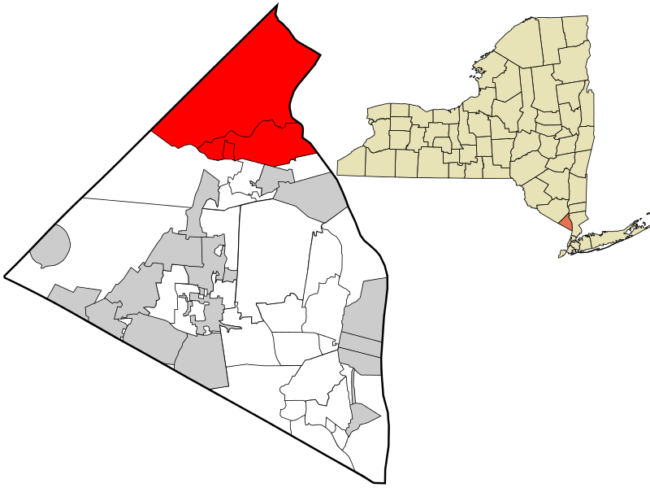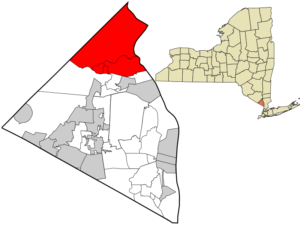Tomkins Cove Quarry proposal: A landfill masquerading as a park

View more images on our Flickr site
 Riverkeeper has submitted comments on Hudson River Resources and Tilcon New York’s proposal to convert the Tomkins Cove Quarry into landfill and then ultimately into 199 acres of public waterfront green space for recreation. In our comments, we urged the Department of Environmental Conservation to recognize the many problems with the proposal and consider other alternatives.
Riverkeeper has submitted comments on Hudson River Resources and Tilcon New York’s proposal to convert the Tomkins Cove Quarry into landfill and then ultimately into 199 acres of public waterfront green space for recreation. In our comments, we urged the Department of Environmental Conservation to recognize the many problems with the proposal and consider other alternatives.
The proposal plans to fill in the quarry to its original topography with certain construction and demolition — or C&D — materials. It also claims the “beneficial use” of these materials will divert these materials from our overfilled landfills. Barges will transport the fill material down the Hudson, without the environmental impacts of ground transportation to a landfill. The proposal focuses on its two main benefits, creating a public outdoor space and disposing C&D materials. However, the proposal skims over many potential problems.
This plan appears laudable on its surface, but significant problems quickly appear when taking a closer look at the proposal
The Proposal’s Magnitude: Adding 199-acres of green space sounds great, but the process is not so wonderful to the nearby communities and wildlife. The proposal expects the daily volume of C&D materials will be 10,000 cubic yards, enough to fill three Olympic-sized pools. This massive amount of material would be barged down the Hudson daily for about 16 years until the Tomkins Cove Quarry is full. The proposal estimates that it will be 18 years before the green space will be ready for use.
While the quarry is being filled, the water that has collected in the quarry will be continuously pumped out and discharged in a tributary of the Hudson River. The proposal estimates 165.9 million gallons per year dumped into the tributary — and ultimately into the Hudson — with no required testing or treatment of the water.
Because of its scope, it is clear there are potentially huge impacts on the Hudson if problems arise; therefore, the proposal must look at the possibility of other adaptive reuse alternatives with less impact. Establishing a green space at the end doesn’t change the fact that this is a landfill proposal.
C&D Landfills: C&D landfills can cause significant environmental impacts. Though C&D materials are supposed to be non-hazardous, leaching of minerals and heavy metals into the water running through C&D landfills have been documented. The breakdown of certain C&D materials, like drywall, creates hydrogen sulfide (H2S). This not only smells bad, but can cause major health impacts and increase the likelihood of landfill fires.
The proposal limits its accepted materials, seemingly eliminating many of the problematic C&D materials that cause the problems mentioned above. However, standards for C&D materials are extremely difficult to maintain and the proposal doesn’t contain specific exclusions for problematic C&D materials. This leaves room for such materials to enter through loopholes, such as the proposal’s allowance for <1% of excluded debris to be accepted based on visual inspection. This is problematic not only because visual inspection is very unreliable, but also at this scale, a 1% exception could allow for up to <24,000 cubic yards a year of potentially hazardous materials to enter the quarry.
In addition, the lack of required monitoring of discharged water allows contamination to continue undetected. Similarly, the lack of treatment plan means that even if a problem is found, it may not be addressed for some time.
The most stringent standards must be incorporated into the proposal to protect against the possibility of major impacts on the environment and human health if the proposal is accepted.
Lack of Guarantee: The proposal’s proclaims the impressive end goal of 199-acres of public green space, but nowhere in the proposal are there any mechanisms that guarantee the land will be given to the public for use. It is imperative that such mechanism exists, otherwise the nearby communities may be forced to bear the burden of the Tomkins Cove Quarry reclamation without any of the benefits.
If you are also concerned about the impact of this proposal, we urge you to make your voices heard through the public comment process. Information on submitting public comments will published on the Environmental Notice Bulletin if and when the Department of Environmental Conservation determines the application is complete.
